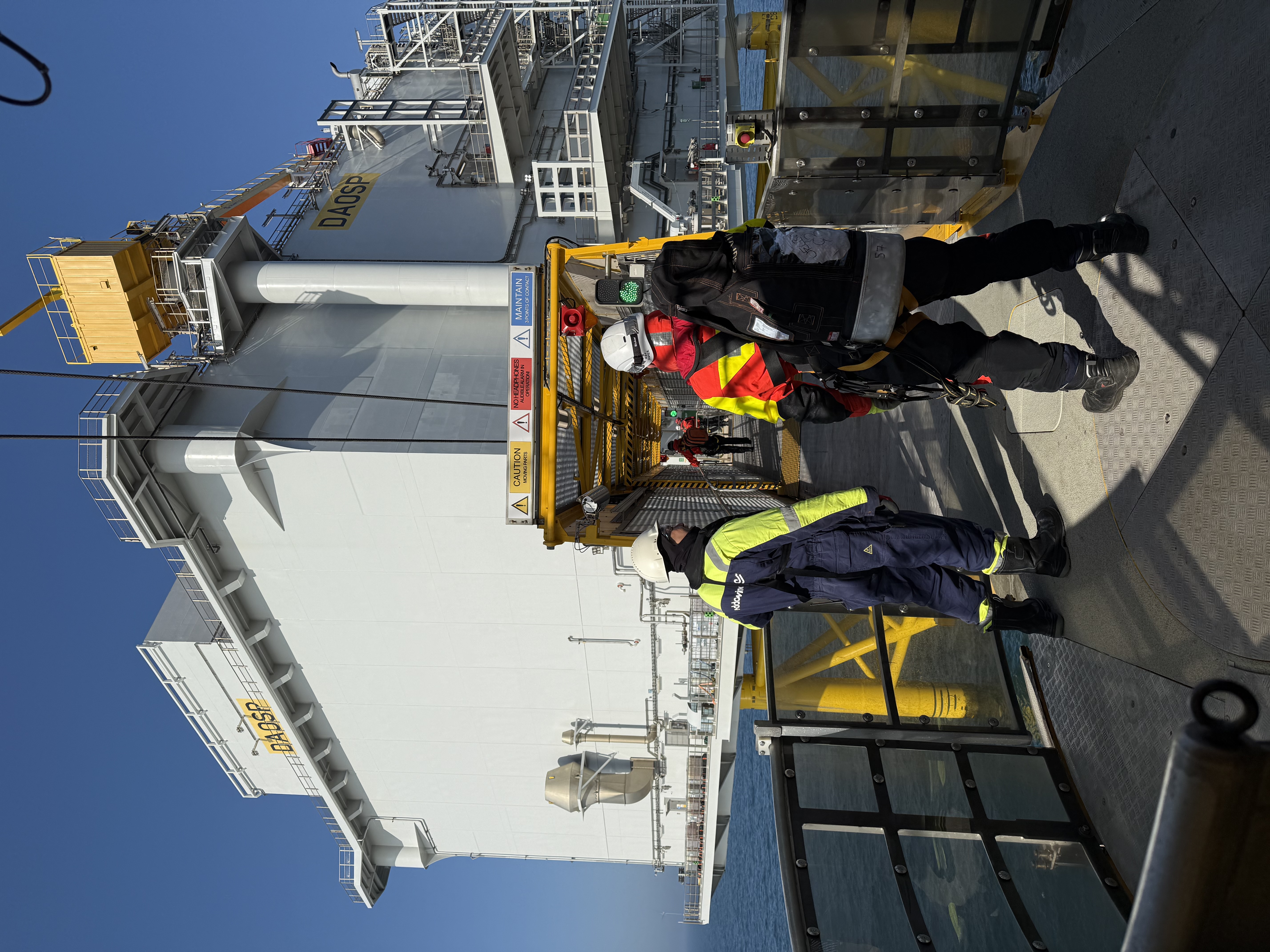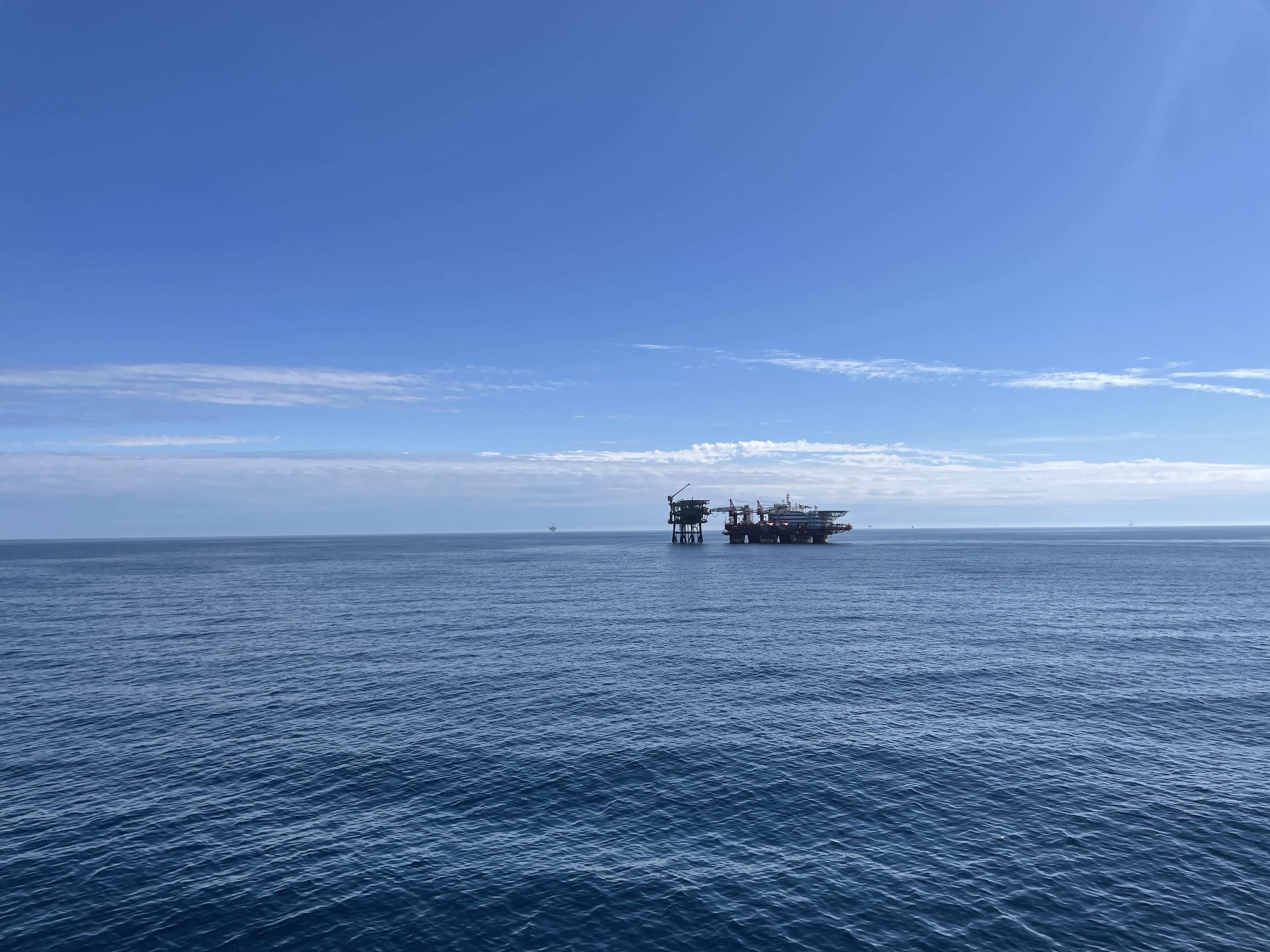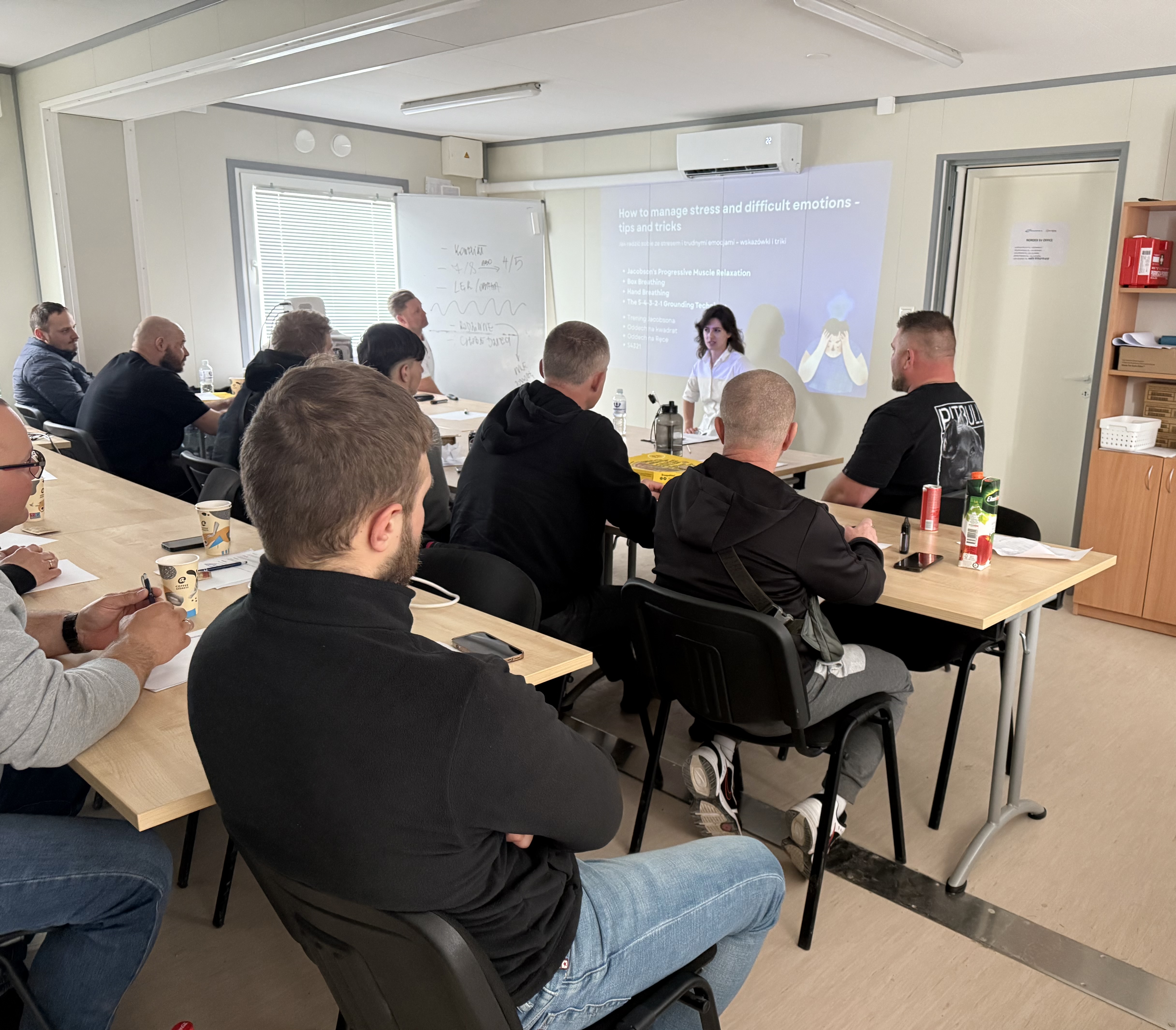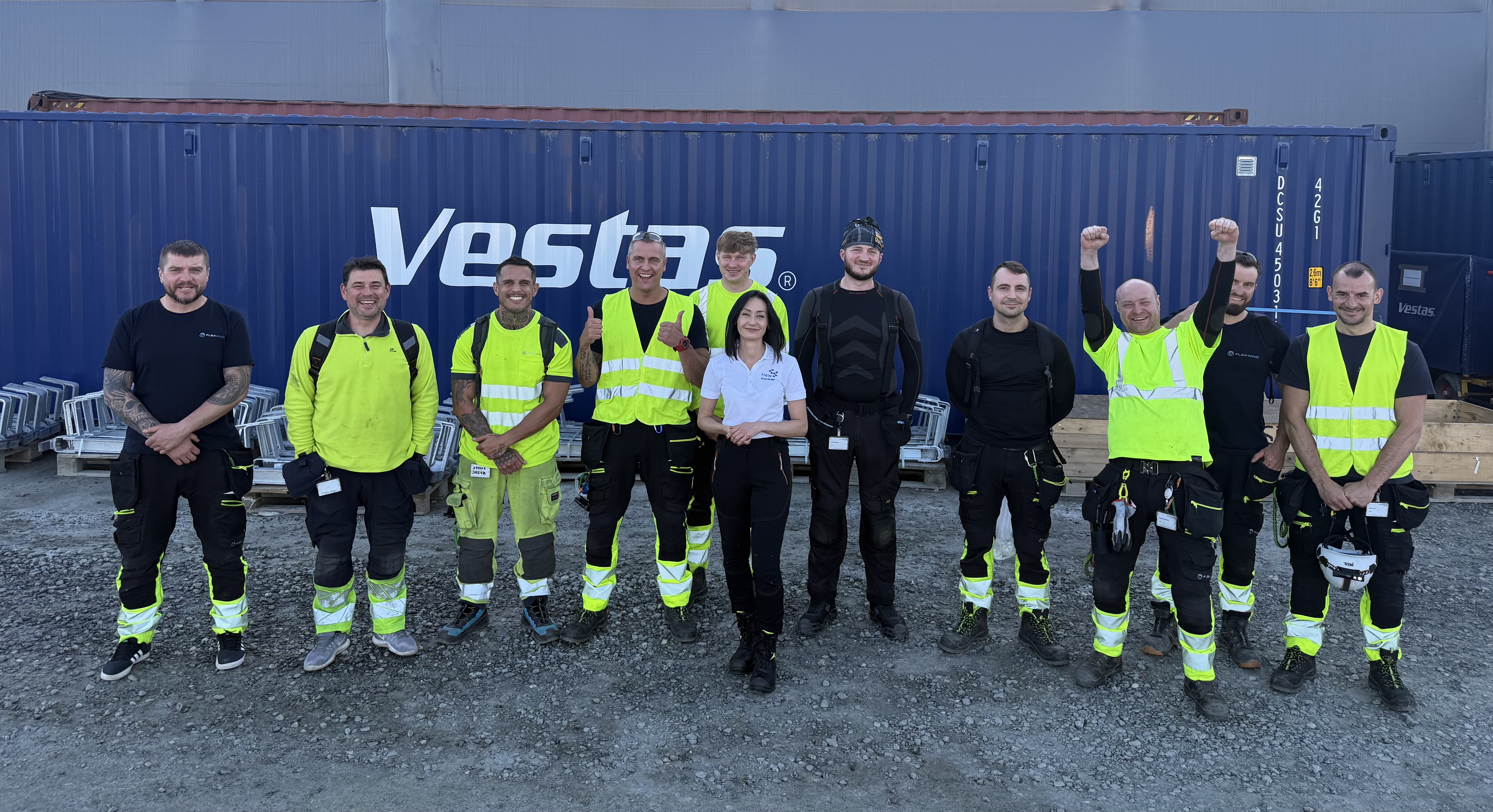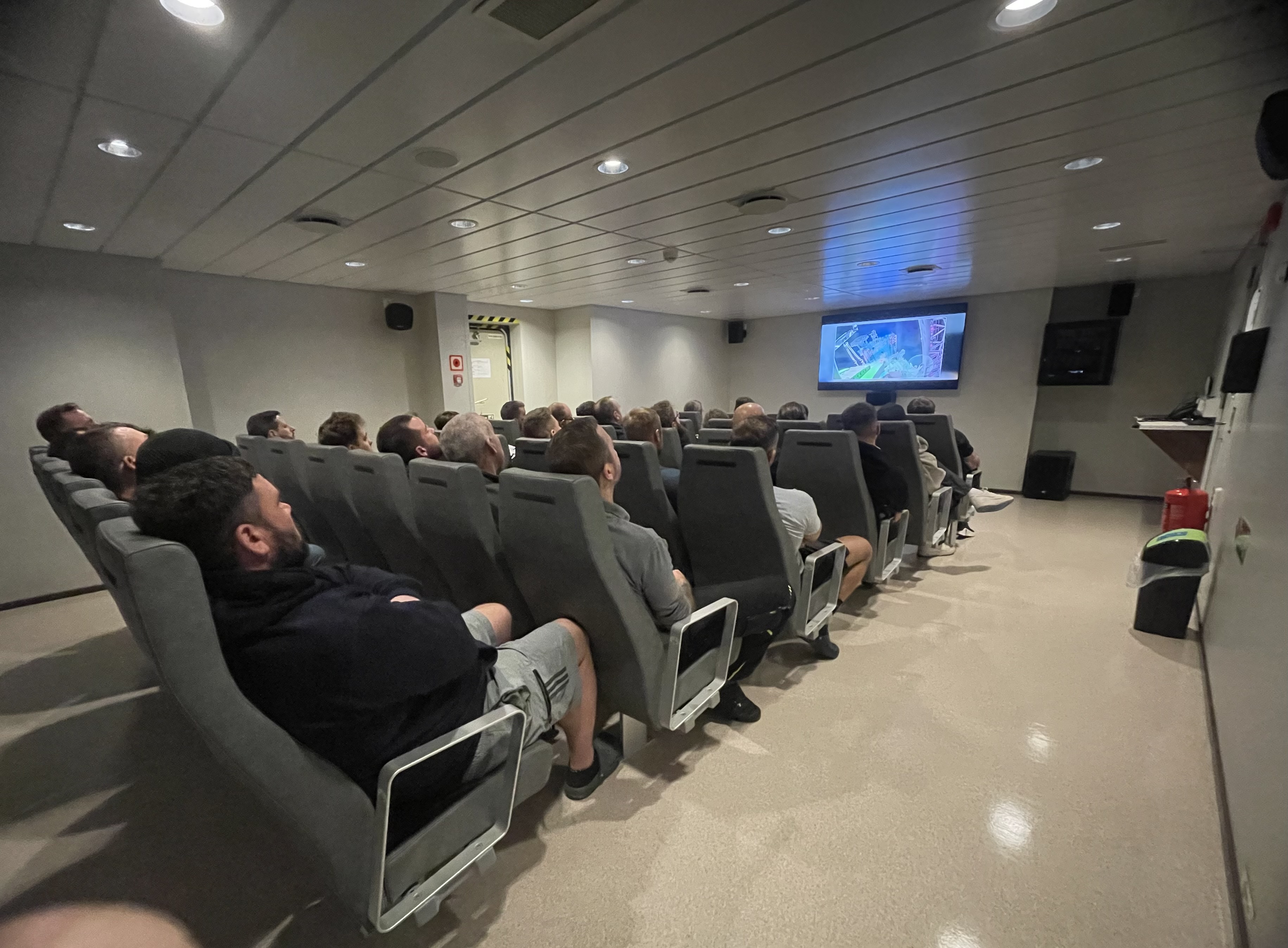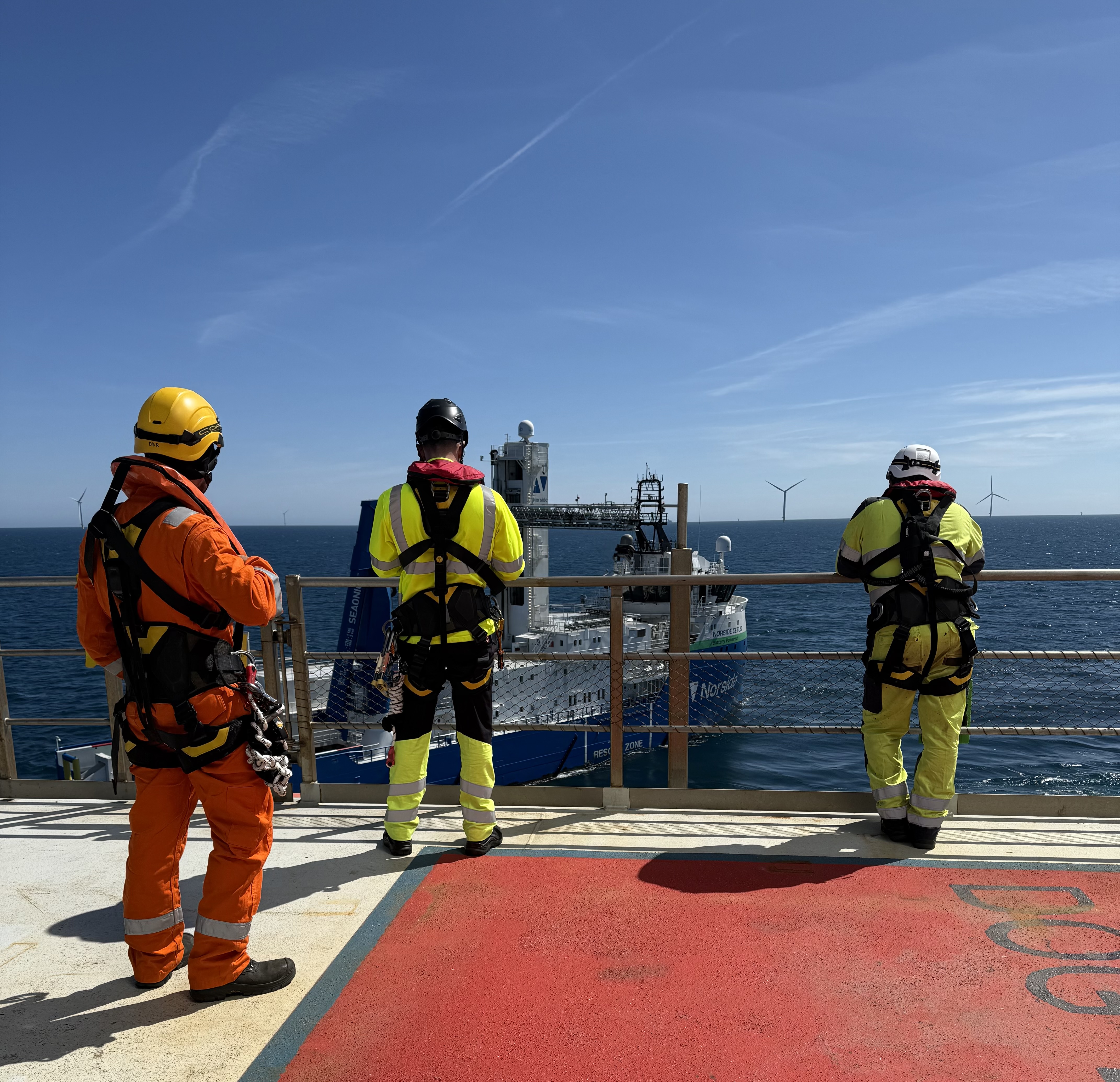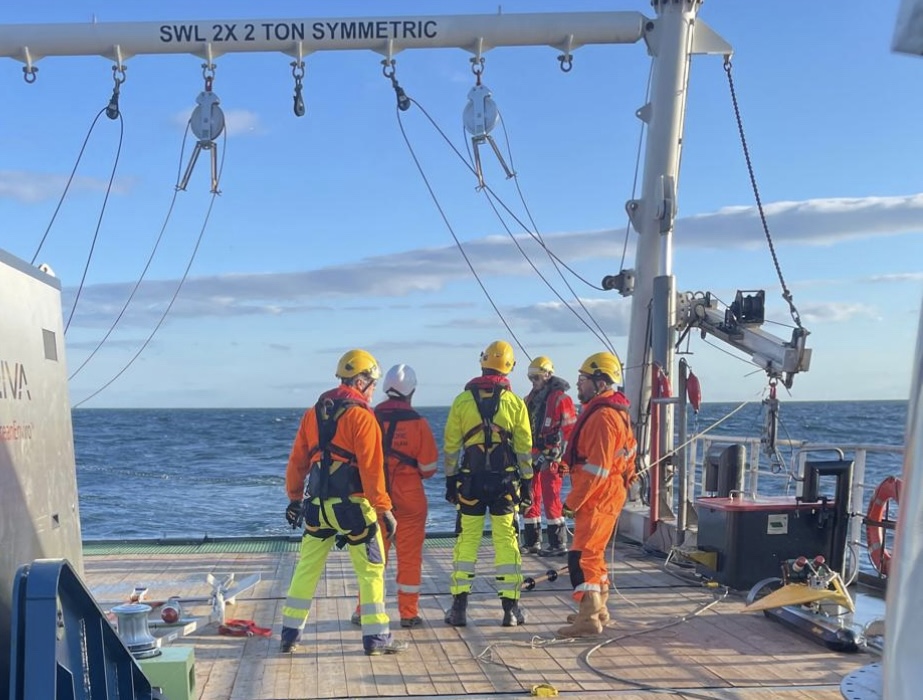Seafarers and new fuels: safety and mental load on ammonia/hydrogen projects

Maritime decarbonization is accelerating, with ambitious emissions targets pushing shipping to adopt new fuels like ammonia and hydrogen. But amid this green transition, there is growing concern that seafarers – the 2 million strong workforce at the heart of shipping – are being overlooked. Training gaps and crew welfare issues are emerging as front-page themes, raising questions about safety and mental health in the push for cleaner fuels. The impacts span upstream and downstream: from fuel producers (many in the Middle East) investing in ammonia and hydrogen supply, to ship crews and port workers on the frontlines of handling these hazardous fuels. Ensuring seafarers are prepared and protected is not just an HR issue – it’s a linchpin for the success of maritime decarbonization.
The Rise of Ammonia and Hydrogen in Shipping
The International Maritime Organization (IMO) and industry leaders have set aggressive decarbonization goals for shipping – for example, cutting greenhouse gas emissions 40% by 2030 and reaching net-zero by 2050. Achieving this will require a shift from traditional heavy fuel oil to low- or zero-carbon energy sources. Among the top contenders are ammonia and hydrogen, which offer carbon-free emissions at the point of use. These fuels are gaining traction: dozens of ammonia-fueled ships (including tankers, bulk carriers, and a recently converted ammonia-fueled tugboat) are under construction or in trials, and hydrogen fuel cells are being piloted on ferries and tugs. In the Middle East, massive investments are underway to produce green hydrogen and ammonia (for example, Saudi Arabia’s NEOM project aims to export green ammonia globally). Major regional ports like those in the UAE and Oman are positioning to become alternative fuel bunkering hubs, which means local seafarers, fuel barge operators, and terminal crews will soon be handling these new fuels in significant quantities.
However, ammonia and hydrogen introduce new hazards and complexities that were not a factor with conventional marine fuels. As one safety analysis put it, these fuels are “more hazardous to the seafarer than existing fuels, offering previously unfamiliar hazards”. Ammonia (NH₃) and hydrogen (H₂) have long been used in other industries (ammonia in fertilizer production, hydrogen in refineries and as an industrial gas), but using them at sea for fuel is uncharted territory. There is almost no operational history to learn from. This novelty means ship designs, fuel systems, and operating procedures are being developed in real-time, even as the first projects launch. Amid this rapid change, there’s a real risk that the human element – the seafarers who must work with these fuels – could be left behind. In fact, a recent Reuters industry report highlighted “growing concern that the workforce of seafarers, most from the Global South, risk being left behind if they cannot be trained in the new skills” needed for alternative fuels. In short, maritime decarbonization is not only a technical challenge but a human one.

Unique Safety Challenges of Ammonia and Hydrogen Fuels
From a safety standpoint, ammonia and hydrogen each come with distinct risks that demand new approaches in ship design and crew preparedness. Hydrogen is extremely flammable and leak-prone: it has a wide flammability range and ignites at very low energy, meaning even a small leak could find an ignition source easily. Hydrogen must be stored either as a cryogenic liquid at –253°C or as highly compressed gas, which poses challenges for tank integrity, insulation, and managing boil-off gas. A hydrogen flame is nearly invisible in daylight, making fire detection tricky. All these factors mean that using hydrogen as marine fuel requires robust leak detection, ventilation, and fire prevention systems, plus meticulous engineering to prevent embrittlement or structural issues from cold temperatures.
Ammonia, on the other hand, is less flammable than hydrogen (and indeed less prone to ignition than even LNG or diesel). Its defining hazard is toxicity. Ammonia is a caustic and poisonous gas – even a small concentration in air (a few dozen ppm) can cause eye, throat, and lung irritation, and higher doses can be fatal. A leak of ammonia fuel inside a ship could rapidly create a life-threatening situation for the crew. Thus, ammonia-fueled vessels need rigorous ventilation and gas detection systems. Bunkering (fueling) operations for ammonia must be carefully controlled to avoid any releases; crews may need to wear respirators and chemical-resistant suits when connecting or disconnecting ammonia fuel lines. Ammonia is also corrosive to certain metals and materials, which means fuel system components must be specially chosen and maintained to avoid degradation. Additionally, emergency escape routes and muster stations on ammonia-fueled ships must account for the possibility of a toxic gas leak (for example, ensuring that in an emergency, crew can evacuate upwind of any ammonia vapors).
In summary, both fuels demand marine-specific safety strategies. Industry experts note that ships will require new containment system designs, such as double-walled pipes for ammonia and specialized tank materials for hydrogen. Safety systems – gas detectors, automatic shutoffs, high-capacity ventilation, and water spray or dry powder fire suppression – must be tailored to these fuels’ properties. Crucially, seafarers themselves need to be prepared: “Both fuels demand specialized training – particularly at sea, where space is limited and response windows are short,” as one analysis concluded. The goal is to ensure that ammonia- or hydrogen-fueled ships can achieve at least the same level of safety as today’s oil-fueled ships. Achieving that parity will require not just engineering controls but also a high level of crew competency and vigilance.
Bridging the Training Gap
Ensuring seafarers can safely handle ammonia and hydrogen fuels is a massive challenge – one that the industry is only beginning to tackle. The numbers alone are daunting: an estimated 450,000 seafarers will require additional training by 2030, and roughly 800,000 by the mid-2030s to operate vessels using alternative fuels. In other words, nearly half of the world’s merchant mariners need upskilling within the next decade. This estimate (from a study by Lloyd’s Register and UMAS) assumes a rapid ramp-up of alternative-fuel ships in the 2020s, which is in line with decarbonization targets. If training falls short of this scale, we risk a situation where new green ships are built but there aren’t enough qualified crew to man them safely.
The problem is that current maritime training standards are lagging behind. The internationally mandated crew training regime (the STCW Code – Standards of Training, Certification and Watchkeeping) has not been substantially updated since 2010. STCW does include basic safety and some specialized training (for instance, there are provisions for LNG fuel training under the IGF Code), but ammonia, hydrogen, methanol, and other emerging fuels are not yet fully covered. Recognizing this, the IMO only recently developed interim guidelines for training seafarers on ships using alternative fuels. These interim guidelines – expected to be formally approved in 2025 – outline basic and advanced training requirements and competency standards for crew on alternative-fueled ships. Importantly, the IMO is also working on fuel-specific training regimes: training programs for methanol/ethanol, ammonia, fuel cells, LPG, hydrogen, and batteries are being prioritized (in that order) for development. This means that in the near future, there should be dedicated certification courses for, say, an “Ammonia Fuel Advanced Operations” endorsement on a mariner’s license, similar to how LNG fuel training is handled today.
While regulators play catch-up, some forward-leaning shipowners, classification societies, and maritime training centers are not waiting around. Industry initiatives have begun to fill the gap: for example, Anglo-Eastern (a major ship management company) opened a new LNG/ammonia bunkering training facility in Mumbai in 2025, featuring a full-scale simulator and transfer skid for hands-on practice in handling cryogenic and toxic fuels. The Mærsk Mc-Kinney Møller Center for Zero Carbon Shipping, together with Lloyd’s Register’s Decarbonization Hub, released a detailed competency roadmap in 2025 for ammonia-fueled ship operations. Their recommendations include updating international regulations and creating “transition journeys” for seafarers – essentially career development plans to help existing crew acquire new fuel skills over time. The same project also conducted an industry survey which found many seafarers are willing to work on ammonia-fueled vessels, but only if comprehensive training is in place. This underscores that the workforce is not resisting the new technology per se; rather, they need confidence that they will be properly trained and not put in unsafe situations..
Key areas of competence have been identified for these new fuels. For ammonia, experts state that seafarers must have knowledge of ammonia’s physical and chemical properties (toxicity, flammability, corrosiveness), the design of ammonia fuel systems and tanks, the specific hazards and emergency response protocols (e.g. how to handle a leak or fuel spill, and how firefighting differs when ammonia is involved). They also need to learn new skills and proficiencies, such as operating fuel-specific equipment, using specialized personal protective equipment (for toxic gas environments), and managing fuel changeovers or inerting procedures. Hydrogen training similarly would cover handling high-pressure gas, cryogenic liquid transfer, and awareness of hydrogen’s unique fire behavior. Much of this training does not yet exist in standard curricula, so stakeholders are calling on maritime academies and training providers to rapidly develop courses and simulation tools. Indeed, shipping companies are urged to conduct gap analyses and invest in upskilling, while flag states and regulators integrate ammonia/hydrogen safety into mandatory standards. Until the IMO’s rules are formalized, many early projects rely on ad-hoc training programs developed with class societies. For example, some flag administrations working with vessel owners have required crew training drills and tailored safety management procedures as conditions for approving ammonia-fueled ship trials.
The Human Factor: Mental Load and Wellbeing
Beyond the technical skills, the transition to new fuels is creating a significant mental load on seafarers. Life at sea was already challenging – characterized by long periods away from home, demanding work, and sometimes precarious conditions. The introduction of novel fuels like ammonia and hydrogen can add further stressors on top of a seafarer’s typical duties. For one, crew must maintain a heightened level of vigilance to manage the safety risks of these fuels. As noted earlier, mistakes or lapses in procedure (like missing a small ammonia leak) could have dire consequences. This constant pressure to “get it right” can weigh on crew mental health. One seafarer advocacy group emphasized that we must consider not just physical safety but also “mental wellbeing and psychological safety in respect to their comfort with using alternative fuels.” In other words, if crew members do not feel confident and secure working with a fuel as dangerous as ammonia, that anxiety itself can undermine safe operations (and personal morale).
Recent research is starting to document these impacts. A 2023 survey by the International Seafarers’ Welfare and Assistance Network (ISWAN) looked at how decarbonization is affecting seafarers’ work and wellbeing. Engineers in the survey reported that handling new fuel requirements with the same manpower was straining their health and morale. As one engineer described, the changes are “both physical and mental” – cleaning and retrofitting fuel tanks was a physical challenge, and “use of different fuels required a lot of training and understanding. Maintaining machinery has added burden to already stressed crew.” This comment illustrates how introducing new fuel systems (often meaning additional equipment, new maintenance routines, and more frequent checks) can increase workload for engine-room crew who may already feel stretched. Another seafarer noted that frequent fuel changeovers and regulatory compliance checks “agitate stress levels” and negatively impact wellbeing, especially if they happen during already busy port calls. There is also the issue of fatigue – for instance, performing ammonia bunkering or fuel system purge operations might be lengthy processes that eat into rest hours, thus affecting crew recovery time.
It’s important to recognize that these stressors come on top of existing challenges in the industry. The COVID-19 pandemic’s crew-change crisis (which stranded thousands of seafarers on ships beyond their contracts) was a stark reminder of the fragility of seafarers’ mental health. Even outside of crisis times, crew often face uncertainty about timely relief and endure high work stress near the end of their tours. Extended tours or short-handed voyages – which could happen more if only a limited pool of crew is trained for ammonia/hydrogen – can lead to burnout. The Mission to Seafarers charity has reported “real mental fatigue” among seafarers when crew rotations are delayed, noting an increase in cases of crew struggling to cope with long periods onboard. While that example stems from a different cause, the underlying point is relevant: prolonged stress and uncertainty can erode mental wellbeing, and introducing new fuel technology without robust support and training could exacerbate that.
Psychological safety is an emerging concept in this discussion. Seafarers should feel able to voice concerns, report mistakes, and suggest improvements when dealing with alternative fuels, without fear of blame. Fostering a strong safety culture – where crew are empowered to pause operations if something seems unsafe, for example – is critical when working with unfamiliar hazards. Maritime organizations like DNV have highlighted the need for “strong safety leadership” and a “culture of trust” onboard to navigate the zero-carbon transition. This includes ensuring crew have confidence in the training they’ve received and trust that their ship’s design will protect them. If seafarers perceive that cost-cutting or rushed implementation is compromising their safety, it can lead to chronic anxiety. On the other hand, involving crew in the planning and risk assessment for new fuel systems can increase their sense of ownership and reduce fear of the unknown.
Key Stressors During Crew Transfer and Bunkering Operations
One practical way to address the human element is to identify specific stressor points in operations involving new fuels, and then mitigate them. Two such high-stress scenarios are crew transfers and bunkering of alternative fuels:
· Crew Transfer and Rotation: The process of transferring crew on/off vessels (whether via small boat, helicopter, or port embarkation) is often stressful even under normal conditions. In the context of ammonia/hydrogen projects, crew transfers might be complicated by the need for specialized trained personnel. For example, a relief crew member might need specific ammonia-fuel certification, and if they’re delayed, the on-board crew may have to stay longer on duty. This uncertainty – “Will my relief arrive on time? Or will I be asked to extend my contract?” – can weigh on seafarers’ minds as their contract end date nears. Logistics for crew changes in remote project locations (such as an ammonia bunkering hub under development) can also be challenging, potentially involving long travel and quarantine or extra medical checks (if, say, there are exposure concerns). All these factors contribute to mental stress. Ensuring clear communication about crew change plans, and having contingency arrangements, can help reduce anxiety for crew waiting to go home or those joining a new fuel ship for the first time.
· Bunkering Operations: Taking on fuel is always a critical operation at port, but with conventional fuels (diesel, LNG) it has become routine through decades of practice and standardized procedures. Bunkering ammonia or hydrogen is a new frontier, and it can be a tense experience for crew. They must coordinate with shore personnel or bunker barge teams, follow strict protocols, don protective gear, and be prepared to respond instantly to any leak or emergency. The checklist of precautions is long – for instance, before ammonia bunkering, all ventilation systems must be operational, detection monitors calibrated, communication lines open, and emergency shutdown systems tested. Crew involved may feel the weight of how high-consequence the operation is. A small lapse could mean a toxic release or fire, so there is pressure to be extremely meticulous. This hyper-vigilance, while necessary, is mentally fatiguing. Bunkering can also occur at odd hours (depending on port schedules), potentially interrupting normal rest. Physical discomfort is another factor: wearing a gas mask and chemical suit in a hot climate (e.g., Middle Eastern ports in summer) can quickly lead to heat stress and exhaustion, adding to mental strain. To alleviate these stressors, shipping companies are developing detailed bunkering manuals and drill routines. One recent effort by a consortium led by Copenhagen Infrastructure Partners produced a 70+ page ammonia bunkering safety manual to guide crews step-by-step, so that they can rely on well-defined procedures and feel less uncertainty. Regular drills in port, where crew practice emergency responses to a simulated leak, can build confidence and muscle memory, making real operations less daunting.
By acknowledging these stress points and actively managing them (through training, better scheduling, adequate rest periods, and mental health support), companies can protect their seafarers’ wellbeing. It is encouraging to see that some operators now include mental health resources – like 24/7 counseling hotlines or peer support programs – especially for crews involved in trial projects with alternative fuels. Open dialogue is key: crew should be briefed thoroughly before their first ammonia or hydrogen bunkering, not only on what to do, but on what psychological reactions they might experience (it’s normal to be nervous) and how to cope (e.g., follow the training, trust the team, and debrief afterward).
Towards a Safe and Just Transition
As the shipping industry charts a course toward zero emissions, putting seafarer safety and welfare at the center of the transition is both an ethical imperative and a practical necessity. A major accident or a workforce crisis due to new fuels would set back decarbonization efforts enormously. Conversely, empowering the maritime workforce with the right skills and support can accelerate the transition. There are positive signs: Global labor and maritime organizations have formed the Maritime Just Transition Task Force, which explicitly aims to ensure “shipping’s response to the climate emergency puts seafarers at the heart of the solution.” This has led to important studies and funding for skills development in key seafarer-supplying nations. For example, the Philippines (which supplies roughly 14% of the world’s seafarers) has begun rolling out training programs for alternative fuels with international support. Likewise, countries in the Middle East that are investing heavily in alternative fuel infrastructure are recognizing that a trained workforce – both onboard ships and in ports – is critical for their green ambitions to succeed. A holistic approach involving shipowners, training institutions, regulators, and the seafarers themselves is needed to update curricula and share best practices rapidly across the industry.
In conclusion, ammonia and hydrogen projects represent a bold step towards sustainable shipping, but they come with non-negotiable requirements for safety and human factors management. With proper training, robust safety cultures, and attention to mental health, seafarers can not only adapt to these new fuels but become champions of the green transition at sea. The journey has begun: guidelines are being written, prototype vessels are sailing, and crew are starting to get specialized training. Yet much work remains to scale this up in time. By investing in seafarer training for ammonia safety and prioritizing maritime mental health, the industry can navigate the challenges of decarbonization without leaving its workforce adrift. A true “green” shipping future isn’t just about cleaner fuels – it’s about making sure the people behind the helm are safe, skilled, and supported in this new era.
References
Scott, M. (2024, December 3). A sea-change for seafarers as the shipping industry gears up to decarbonise.Reuters. https://www.reuters.com/sustainability/climate-energy/sea-change-seafarers-shipping-industry-gears-up-decarbonise-2024-12-03/
The Seafarers’ Charity. (2025). Alternative fuels and seafarer safety.https://www.theseafarerscharity.org/what-we-do/our-influence/alternative-fuels-and-seafarer-safety
International Maritime Organization. (2025, February 26). MSC.1/Circ.1687: Interim guidelines for the safety of ships using ammonia as fuel. (Secretariat PDF hosted by BIMCO). https://www.bimco.org/media/bxvcygg1/msc1-circ1687-interim-guidelines-for-the-safety-of-ships-using-ammonia-as-fuel-secretariat.pdf
BIMCO / Maritime Technologies Forum. (2025, April 3). Navigating alternative fuels: New guidelines for ammonia safety management systems. https://www.bimco.org/news-insights/bimco-news/2025/04/03-mtf-guidelines/
Atchison, J. (2025, March 12). Seafarer training for marine ammonia fuel comes into focus. Ammonia Energy. https://ammoniaenergy.org/articles/seafarer-training-for-marine-ammonia-fuel-comes-into-focus/
Atchison, J. (2025, August 11). Training simulators for marine ammonia fuel. Ammonia Energy. https://ammoniaenergy.org/articles/training-simulators-for-marine-ammonia-fuel/
Safety4Sea. (2025, August 28). Why are hydrogen & ammonia relevant to shipping now?https://safety4sea.com/hanwha-why-are-hydrogen-ammonia-relevant-to-shipping-now/
International Seafarers’ Welfare and Assistance Network (ISWAN) & The Seafarers’ Charity. (2023). The impact of maritime decarbonisation on wellbeing: Findings of an ISWAN survey of seafarers and shore-based staff. https://www.theseafarerscharity.org/assets/uploads/logos/The-impact-of-maritime-decarbonisation-on-wellbeing-Findings-of-an-ISWAN-survey-of-seafarers.pdf
Lloyd’s Register & The Silk Alliance / Mærsk Mc-Kinney Møller Center for Zero Carbon Shipping. (2023). Recommendations for design and operation of ammonia-fuelled vessels (QRA joint study).https://www.thesilkalliance.com/wp-content/uploads/Ammonia_QRA_joint_study.pdf
Lloyd’s Register. (2023, June 27). Human factors considerations: Ammonia fuel – end-of-stage report.(Project document PDF). https://safety4sea.com/wp-content/uploads/2023/08/LR-Human-Factors-Project-Ammonia-Fuel-2023_08.pdf
gCaptain. (2025, August 6). World’s first green ammonia bunkering completed by COSCO Shipping subsidiary. https://gcaptain.com/worlds-first-green-ammonia-bunkering-completed-by-cosco-shipping-subsidiary/
MarineLink. (2025, August 6). World’s first green ammonia bunkering operation completed in Dalian.https://www.marinelink.com/news/worlds-first-green-ammonia-bunkering-528747
Reuters. (2024, August 26). World’s first ammonia-fuelled PSV ship to operate in 2026, says Wärtsilä.https://www.reuters.com/sustainability/climate-energy/worlds-first-ammonia-fuelled-psv-ship-operate-2026-says-wartsila-2024-08-26/
Reuters. (2024, April 22). BHP says it aims to receive first ammonia-fuelled bulk carrier in 2026.https://www.reuters.com/sustainability/bhp-says-it-aims-receive-first-ammonia-fuelled-bulk-carrier-2026-2024-04-22/
Reuters. (2024, October 27). Zero-carbon ammonia for shipping faces cost, safety challenges.https://www.reuters.com/markets/commodities/zero-carbon-ammonia-shipping-faces-cost-safety-challenges-2024-10-27/
Zaharia, M., & Coulter, J. (2024, June 19). Trauma from Red Sea attacks adds to seafarer shortage.Reuters. https://www.reuters.com/world/middle-east/trauma-red-sea-attacks-adds-seafarer-shortage-2024-06-19/
